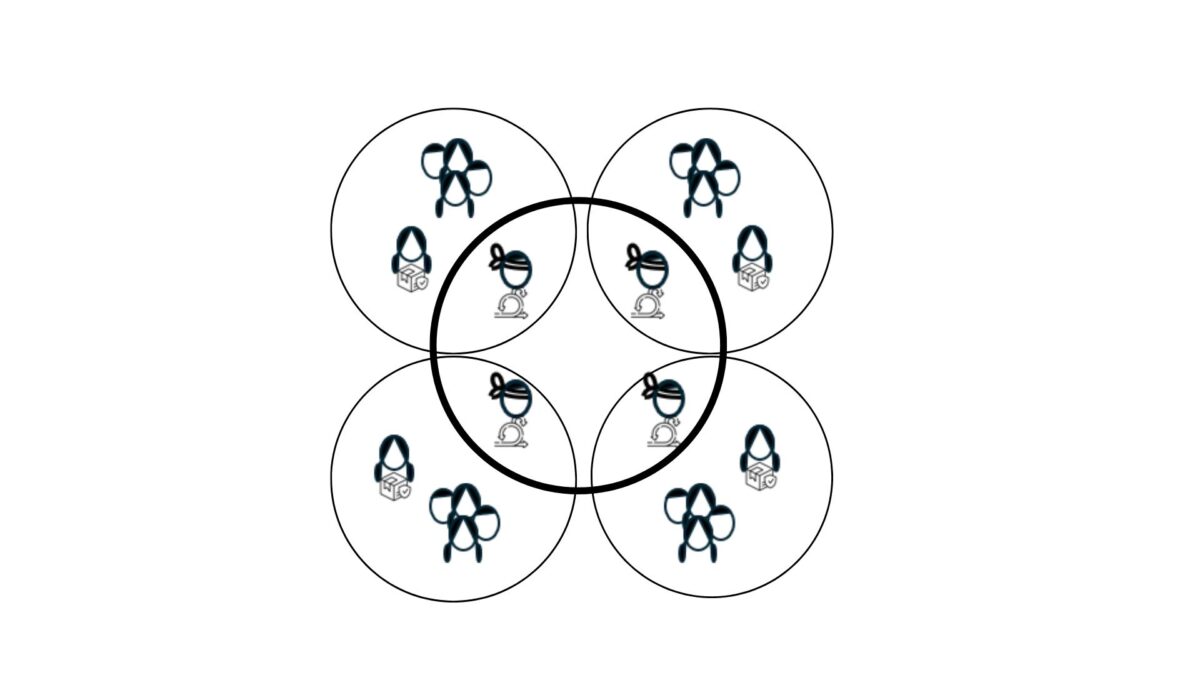Scrum Master Team (SM Team)
Scrum Master Team (SM Team)
Play Description
Pattern Summary
The Scrum Master Team is a group of Scrum Masters working together to effectively implement Scrum practices, continuous improvement, coordination, facilitation and impediment removal efforts across multiple teams within an organization.
Also Known As/Similar To
Scrum Master Community of Practice (CoP), Scrum Master Chapter
Pattern Group(s)
Scaling Structures, Scaling Roles, Scaling the Scrum Master
Challenge Categories
Continuous Improvement, Impediment Resolution, Cross-Team Coordination, Organizational Structure, Dependency Management
Challenges Addressed
The following challenges for the Scrum Masters are likely to be improved or addressed by implementing this pattern:
- Struggling to identify and overcome impediments that are not isolated to their team.
- Struggling to implement continuous improvements because doing so would require the coordinated effort of multiple teams and team leaders.
- Struggling to coordinate with each other, because they do not know each other well enough or do not know whom to coordinate with.
- Struggling to manage dependencies, so delivery of work is either being delayed as each team waits for others. Or, the work delivered is not well integrated.
Definition
The Scrum Master Team is a group of Scrum Masters working together to effectively implement Scrum practices, continuous improvement efforts and impediment removal efforts across multiple teams within an organization. Creating a Scrum Master Team increases success because the shared knowledge and efforts of multiple Scrum Masters can be leveraged to improve use of Scrum in the organization and overcome challenges that cannot be easily overcome by a single Scrum Master.
In Frameworks
The Scrum Master Team is responsible for overseeing the effective implementation of Scrum practices across multiple teams within an organization. This team is dedicated to fostering a culture of continuous improvement, both within individual teams and throughout the organization, and ensuring that Scrum practices are effectively implemented and scaled across the organization.
Key responsibilities of the Scrum Master Team include:
- Addressing Impediments: Scrum Master Team is responsible for identifying and resolving impediments that hinder the progress of individual teams. The Scrum Master Team collaborates to address common impediments (blockers & things that slows down the teams) and ensure that teams have the support they need to succeed.
- Improving Teams: The Scrum Master Team provides support and guidance to individual teams, helping them overcome challenges and achieve their goals. They share good/emerging practices and ensure that improvements are implemented effectively across all teams.
- Organizational Continuous Improvement: Scrum Masters Team also focus on improving the overall performance of the program or the organization. They identify areas for improvement, implement changes, and measure the impact of these changes to drive continuous improvement at the organizational level.
How To Use It:
To implement the Scrum Master Team pattern, establish the team, appoint a lead Scrum Master, clarify roles, promote communication, facilitate collaboration, align with stakeholders (in coordination with the Product Owner), and focus on continuous improvement. Success depends on effective communication and collaboration.
Tags/Keywords
Scrum Master Team, Cross-Team Coordination, Scaling Impediment Removal
Use When…
The “Scrum Master Team” pattern is best used when:
- When teams work on the same product or value stream with dependencies and implement the pattern “Network of Teams”.
- It can be used outside the “Network of Teams” as a Community of Practice to enhance & expertise the Scrum Master.
Do Not use this pattern when:
- There is no dependencies between teams and no desire among the Scrum Masters to collaborate.
Advantages
As organizations scale and become more complex, the role of a single Scrum Master can become overwhelming. Creating a Scrum Master Team with multiple members allows for the workload to be distributed effectively. This ensures that each team receives the necessary guidance and support, leading to more successful implementation of Scrum practices.
Disadvantages
- The Scrum Master Team, like the Product Owner Team, can introduce communication overhead by involving multiple members. This can lead to duplicated efforts, additional time in meetings or events, conflicting responsibilities and potentially conflicting loyalties (Scrum team versus Scrum Master Team).
- Decision-making can become more complicated with multiple Scrum Masters, as conflicting opinions or approaches may arise. Coordinating efforts across multiple teams and ensuring alignment can also be more challenging with a larger Scrum Master Team.
Additional Notes
Scrum@Scale. (n.d.). Scrum@Scale guide online: The hub of the SM cycle. Scrum Master Organization. Retrieved July 21, 2024, from https://www.scrumatscale.com/scrum-at-scale-guide-online/#the-hub-of-the-sm-cycle

